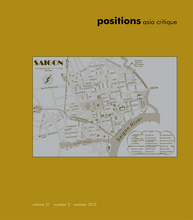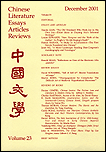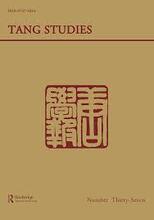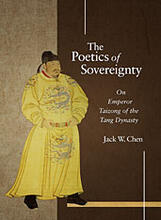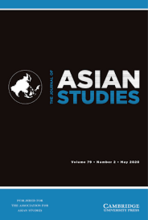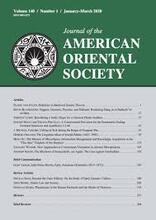This essay examines the discursive constellation of the concepts of sovereignty, coinage, and kinship from the Warring States Period to the first empires of the Qin and Han dynasties. Drawing upon philosophical texts, including the Lunyu, Mengzi, and Guanzi, as well as historical texts such as the Shang shu, Shi ji, and Han shu, I will argue that the foundational narrative for the emergence of coinage in China was inextricable from theories of both sagely and tyrannical sovereignties — an ideological ambivalence that was reflected in the discourse on coinage itself. The coin of the realm was the symbol of power and profit and thus of the political and the economic realities of empire. Yet imperial anxieties over political tyranny would lead classical political theorists to recode the minting of coin in terms of a moral discourse, one that was also instrumental in the moral legitimation of imperial sovereignty itself. This would be the discourse on kinship, which allowed theorists to equate the sovereign with the parent. Coinage, then, like sovereignty, would appeal to the language of kinship, and in this way would be translated from base tokens of material profit into symbols of the sovereign’s beneficent concern.
Publications
2013
2012
2011
The braying of the donkey is understood differently in two separate anecdotes from the Shishuo xinyu. This difference of signification raises the question of what the sound of the bray might mean for the early medieval cultural imagination. An examination of the donkey’s bray within anecdotal, religious, biographical, and poetic contexts relates the humble animal’s call to broader themes of friendship, ritual, politics, and interpretation itself.
This essay examines the significance of a single Chang’an ward — Anyi — as it is represented within anecdotes over the course of the Tang dynasty. It shows how this meaning of the ward is layered through time by its residents, whether they are officials, prominent families, monks, or even ghosts and monsters, and how the ward ultimately belongs to no single user of its space but is continuously appropriated and reappropriated in turn. At the heart of this anecdotal microhistory is a larger argument concerning how the Tang city was experienced, not only in terms of physical space, but also in terms of historical time.
2010
Emperor Taizong (r. 626–49) of the Tang is remembered as an exemplary ruler. This study addresses that aura of virtuous sovereignty and Taizong’s construction of a reputation for moral rulership through his own literary writings—with particular attention to his poetry. The author highlights the relationship between historiography and the literary and rhetorical strategies of sovereignty, contending that, for Taizong, and for the concept of sovereignty in general, politics is inextricable from cultural production. The work focuses on Taizong’s literary writings that speak directly to the relationship between cultural form and sovereign power, as well as on the question of how the Tang negotiated dynastic identity through literary stylistics. The author maintains that Taizong’s writings may have been self-serving at times, representing strategic attempts to control his self-image in the eyes of his court and empire, but that they also become the ideal image to which his self was normatively bound. This is the paradox at the heart of imperial authorship: Taizong was simultaneously the author of his representation and was authored by his representation; he was both subject and object of his writings.
Historiography has long been concerned with the problem of determining standards for evidence. For traditional Chinese historians, it was Confucius who provided the model for historical writing. As the attributed author of the Springs and Autumns, Confucius demonstrated qualities of narratival restraint, historical factuality, moral profundity, and a refusal to engage in idle speculation. Of course, his model was not an easy one to emulate, and later historical writings have drawn on both the factual records of the imperial court (which were not always factual or free of ideological interests) and nonofficial sources, such as private accounts, anecdotal literature, and hearsay. The present essay focuses on this intersection between anecdotal sources and historiography. This is precisely the point when historiography must reflect on its narrative condition, as narrative has interests other than factuality or moral truth. The author shows how the historiographic anxiety over unreliable sources has often coexisted with a fascination with anecdotal stories and gossip.
